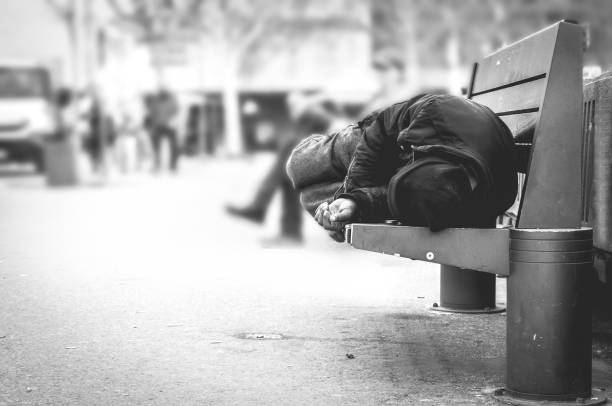
“As of June’ 2019 the average marriage in Canada lasts seven (7) years and 50% of all marriages end in divorce” – Just think about the amount of children involved within these numbers that grow up predominantly with one parent via parental alientation? For the purpose of this blog I will be focussing mainly on the epidemic of the “Fatherless child”… Among those children, how many do you think grow up to lead happy, productive, and fulfilling lives? And by this I mean, not only just staying alive; “the latest available data, Statistics Canada estimates 4,157 suicides took place in Canada in 2017, making it the 9th leading cause of death,…and the leading group at risk are men/young boys” – Stats Canada, but also staying out of jail and having a meaningful and gainful employment which then leads into having a safe and secure dwelling as well as food source. When a child grows up in a one-parent home (usually forcibly as no child doesn’t want to see their parent), their lives are forever altered in any and all aspects. Due to the science supporting it, personal experience both as a child and father I feel the following 5 areas of life have the most significant chances of negative long-term affects for those who live as products of parental alientation & firmly believe that 50/50 custody (unless midigating circumstances warrant otherwise) is truly what’s in the best interest of the children and should be the defaulted agreed upon custody arrangement in Canadian family law going forward!

1 – Unemployment Rates – Although the below mention reference refers to males I can only be lead to believe that this statistic does not discriminate due to gender and with that said, I can tell you from first hand experience this statement is accurate.
“At age 33, men from disrupted family backgrounds were twice as likely to be unemployed (14% compared with 7%), and 1.6 times as likely to have experienced more than one bout of unemployment since leaving school (23% compared with 14%). Again, the reasons for the differences in these risk levels are complicated. Some of the difference seems to be due to poverty and behaviour problems that existed before the divorce and persisted or deepened afterward. However, even after controlling for these factors, men whose parents divorced were still 1.4 times as likely to be unemployed and 1.3 times as likely to have experienced more than one bout of unemployment during adulthood” – pg 6

2 – Homelessness – What first hand experience I do have has tought me that this is an actual problem among young fathers today in almost every community across Canada and the US; I personally have experienced this myself and know it too knows no difference between fe/male; it affects everyone. “Young adults from disrupted families are 1.7 times more likely to have experienced homelessness (6.2% compared with 3.6%). For women, all of this effect is due to the fact that children from divorced households have a higher likelihood of experiencing poverty in childhood, which is also related to homelessness in adulthood. However, for men, all the difference in level of risk may be attributable to the divorce during early childhood, rather than poverty or other problems experienced in childhood” pg 10

3 – Incarceration Rates – When a person is a product of parental alienation and they become an adult they often don’t have the social skills or tools to deal with even the most common of stressful situations; which in turn generally leads to a life-time of crime. “Over the past several decades, rates of crime have increased at the same time as rates of divorce, nonmarital childbearing, and lone parenthood have increased. The relationship between crime and family environment is complicated, especially when the role of poverty is also considered. To say that one has caused the others would be too simplistic. However, many scholars and policy makers who study crime have identified family breakdown as one among a cluster of disadvantages which are associated with criminal activity and with chronic reoffending.” – pg 11

4 – Drugs & Alcohol Use – Many young adults turn to drugs and/or alcohol use to numb the pain and escape reality; I have personal history within my direct family of drug and alcohol abuse to the point that I have sought proper medical help, you can too…”At age 15, boys from lone-parent households were twice as likely as those from intact two-birthparent households to have taken any drugs (22.4% compared with 10.8%). Girls from lone-parent homes were 25% more likely to have taken drugs by the age of 15 (8.2% compared with 6.5%) and 70% more likely to have taken drugs by age 18 (33.3% compared with 19.6%). After controlling for poverty, teenagers from lone-parent homes were still 50% more likely to take drugs.” – pg 9

5 – Mental Health – As a I suffer from PTSD, severe depression, and severe anxiety just to name a few, I of all people know all to well what growing up (forcibly I might add) for the most part without a father as a young boy and the adverse affects it can cause to a childs mental health and how they carry it with them throughout thier lives. “After controlling for other demographic factors, children in lone-parent households are 2.5 times as likely to be sometimes or often unhappy. They are 3.3 times as likely to score poorly on measures of self-esteem.” – “A major longitudinal study of 1,400 American families found that 20%–25% of children of divorce showed lasting signs of depression, impulsivity (risk-taking), irresponsibility, or antisocial behaviour compared with 10% of children in intact two-parent families“. – pg 7

Good job on this A+++++
LikeLike
Very good read! I completely agree.
LikeLiked by 1 person
thank you very much for the read & feedback….
LikeLike
Excellent stats based article!
LikeLiked by 1 person
thank you for the read & feedback; furthermore, yes I like using stats to backup my point…glad someone else appreciates it….thank you
LikeLike
Excellent ,!!!!! 100% real life
LikeLiked by 1 person
thank you for the read & feedback, I also believe its “real life|” talk in my blog for sure; thank you again…
LikeLike